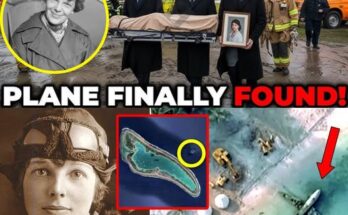
Just over five decades ago, Dubai was little more than a small desert trading post on the Arabian Gulf. It had no skyscrapers, no luxury shopping malls, no man-made islands — just sand, a creek, and a few low-rise buildings. Today, Dubai is one of the world’s most futuristic and luxurious cities, home to the tallest building on Earth, artificial islands visible from space, and a lifestyle that attracts celebrities, billionaires, and tourists from around the globe. This astonishing transformation happened in just 50 years — and it’s one of the most remarkable urban success stories in history.
The Humble Beginnings
In the early 20th century, Dubai was a modest fishing village known for pearl diving and trade. Life was simple, and the harsh desert climate made survival a challenge. There were no paved roads, no electricity, and no real infrastructure. Most of the city’s income came from fishing, boat-building, and small-scale trade through Dubai Creek.
However, in the 1950s and 60s, things started to change. Dubai’s ruler at the time, Sheikh Rashid bin Saeed Al Maktoum, had a vision. He believed that Dubai could become a key player in global trade. With support from British advisors and the first discovery of oil in 1966, Sheikh Rashid began investing in infrastructure — roads, schools, ports, and airports.
The revenue from oil was limited compared to other Gulf countries, so Sheikh Rashid and later his son, Sheikh Mohammed bin Rashid Al Maktoum, knew they had to diversify. This foresight laid the foundation for Dubai’s extraordinary transformation.
The Oil Boom and Smart Investment
Unlike other oil-rich Gulf nations, Dubai didn’t have massive oil reserves. This limitation turned out to be a blessing in disguise. Rather than rely on oil wealth forever, Dubai’s leadership used oil revenues to fuel the development of infrastructure and then rapidly expanded into trade, tourism, aviation, and real estate.
In the 1970s and 1980s, the government began modernizing the city, developing ports like Port Rashid and Jebel Ali — now the largest man-made port in the world. Dubai International Airport was expanded and soon became a global aviation hub. Free trade zones were created to attract foreign businesses, with no income tax and 100% foreign ownership — a revolutionary idea in the Middle East at the time.
Skyscrapers Rise from the Sand
Perhaps the most visible part of Dubai’s transformation is its skyline. In the 1990s, Dubai launched a bold plan to create one of the most modern cities in the world. The city’s first major skyscraper, the Emirates Towers, set the tone for what was to come. But it was the Burj Khalifa — currently the tallest building in the world at 828 meters (2,716 feet) — that captured the world’s attention when it opened in 2010.
Built as the centerpiece of the Downtown Dubai project, the Burj Khalifa is more than just a building. It’s a symbol of human ambition and engineering. Nearby, you’ll find The Dubai Mall, one of the largest malls in the world, and the Dubai Fountain, which features dazzling water shows set to music.
Today, Dubai’s skyline is filled with hundreds of high-rise buildings, futuristic towers, and luxury residences. What used to be flat desert is now a vertical forest of glass and steel.
Artificial Islands and Mega Projects
Dubai is not just about tall buildings — it’s about daring projects that push boundaries. One of its most ambitious developments is Palm Jumeirah, an artificial island shaped like a palm tree. Built using land reclamation, Palm Jumeirah is now home to luxurious villas, five-star resorts like Atlantis The Palm, and high-end restaurants and shops.
Another extraordinary project is The World Islands, a collection of man-made islands shaped like a map of the world. Though not fully developed yet, it remains a symbol of Dubai’s ambition to do the impossible.
Then there’s Dubai Marina, a man-made canal city that feels like Miami or Monaco, and Downtown Dubai, where the Burj Khalifa, Dubai Mall, and luxury hotels redefine urban living.
Tourism, Luxury, and Lifestyle
Dubai has become one of the most popular tourist destinations on Earth, welcoming over 16 million tourists annually (pre-pandemic). What attracts people here? A combination of futuristic architecture, shopping, desert adventures, cultural experiences, and pure luxury.
The city offers everything from indoor skiing at Ski Dubai to the world’s only seven-star hotel, the Burj Al Arab. Tourists can go dune bashing in the desert, enjoy a dinner cruise in Dubai Creek, or take a selfie at the top of the Burj Khalifa.
Luxury shopping is another draw. Malls like Mall of the Emirates and Dubai Mall are not just for shopping — they’re destinations filled with aquariums, indoor theme parks, and gourmet food halls.
Innovation and the Future
Dubai doesn’t just rest on what it’s achieved. It constantly pushes forward. The city is working toward becoming one of the smartest and most sustainable cities in the world. Projects like the Museum of the Future, Dubai Expo 2020 (held in 2021 due to COVID-19), and the Dubai 2040 Urban Master Plan are designed to transform the city further.
Dubai has also made major strides in renewable energy, with large solar farms and initiatives like the Dubai Clean Energy Strategy 2050. The government is heavily investing in tech, AI, robotics, and transportation — including testing autonomous vehicles and even flying taxis.
Challenges and Criticisms
While Dubai’s transformation is impressive, it hasn’t been without criticism. Issues related to labor rights, environmental sustainability, and wealth inequality have drawn attention from human rights groups and global observers. Much of the city’s rapid growth was built by migrant workers, many of whom faced harsh conditions.
Additionally, Dubai’s luxury lifestyle and large-scale developments have raised concerns about ecological impact and overreliance on real estate and tourism. But the government continues to adapt, with more emphasis on green building, economic diversification, and sustainability.
Conclusion: A Modern Miracle
Dubai’s transformation from a barren desert outpost to a dazzling global metropolis in just 50 years is nothing short of miraculous. With limited oil, visionary leadership, and an appetite for risk, Dubai reinvented itself as a symbol of modern success.
It’s a place where dreams are built — often literally — in the form of skyscrapers, islands, and mega-malls. While challenges remain, the city continues to evolve, innovate, and inspire the world. Whether you’re an architect, entrepreneur, traveler, or dreamer, Dubai stands as proof that even the most ambitious goals can become reality — with vision, planning, and bold action.


